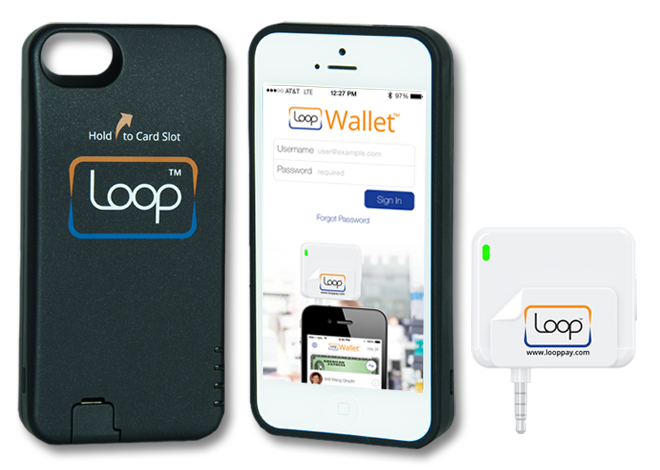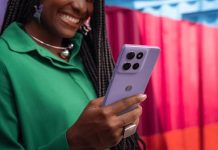
Available in iOS land for awhile now, Loop has now made their mobile payment technology available to Android users for the first time. Pictured above (right) is the Loop dongle which allows this magic to occur.
You see, Loop doesn’t offer yet another NFC payment solution, although it does facilitate wireless payment. You might be wondering how the heck can this work, with a claimed compatibility of over 90% of card reader terminals, we were certainly wondering that as well.
How does it work?
Using Loop is a two step process.
First, users can store as many different credit (or even non-credit magnetic swipe) cards in the Loop app. Swipe your card through the dongle while the app is running, and the mag-stripe data will be stored securely in Loop. You could (for example) swipe your AmEx, Visa cards, magnetic library card, and store them all.
The magic is in the second step. When paying by card at point of sale, attach the dongle to your phone’s headset jack, load the app and select which payment card you want to use, and press the button on the dongle while holding it within about 4 inches of the swipe card reader on the side of the terminal.
Using Magnetic Secure Transmission (MST), the dongle transmits your card information using the same magnetic field that the terminal would detect from the mag-stripe if your card were swiped. Thus, the terminal believes that the card you’ve selected has actually been swiped, when it has actually been transmitted wirelessly to the magnetic reader head.
Would it work here?
We at Ausdroid find ourselves wondering how useful this would be in Australia, though, because many of our credit/debit cards here are now chip-enabled. Trying to swipe a chip-enabled card usually results in a prompt to insert the chip card… so if the Loop dongle transmits the exact same data that a card-swipe would transmit, then in all likelihood any chip-enabled terminal is going to want that chip inserted.
It’s a fantastic idea, and will probably see a fair bit of take-up in markets where chip cards / NFC cards are less prevalent (unlike Australia where they’re virtually everywhere now).
http://youtu.be/8bLA01NJpEY
Hit the source link for more info.




